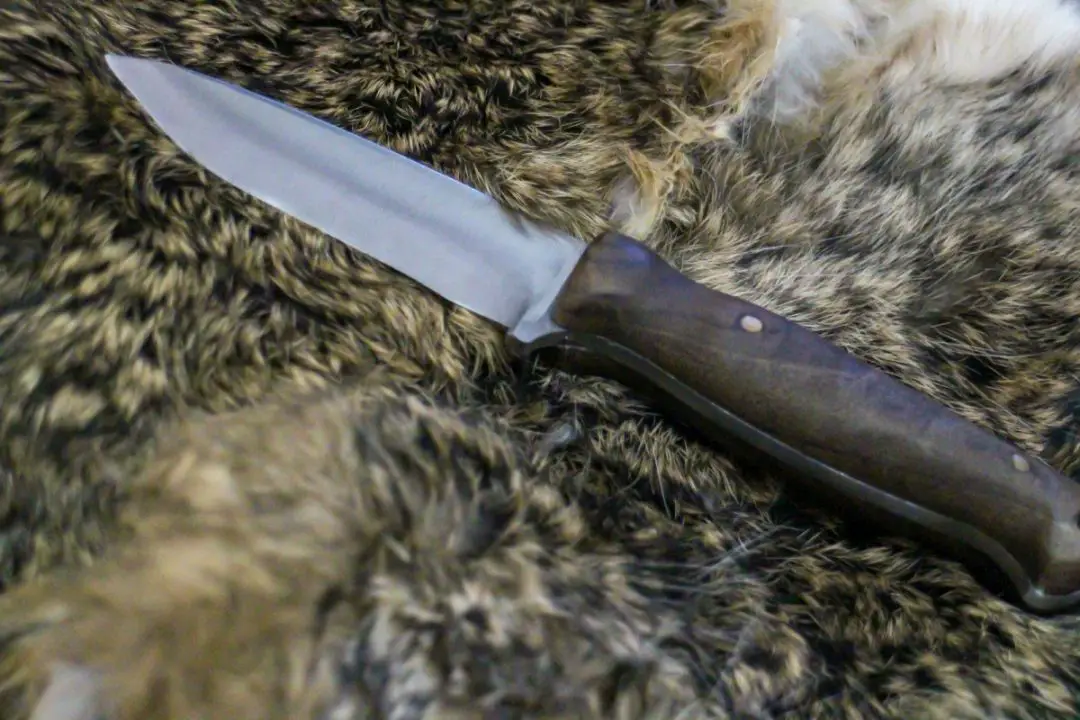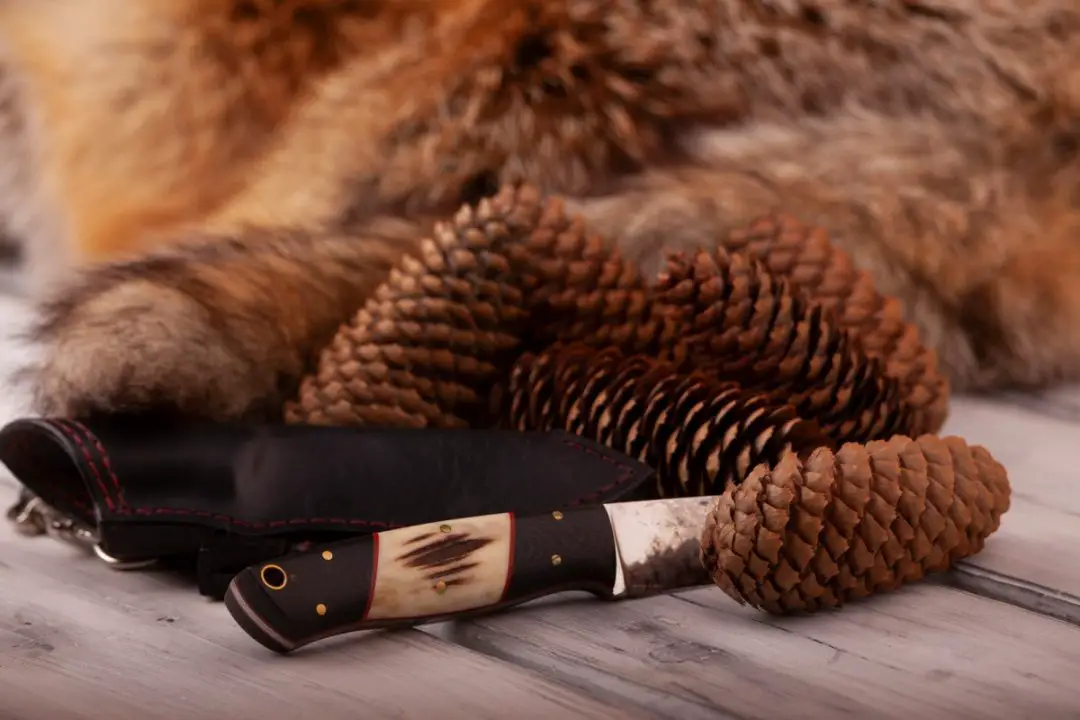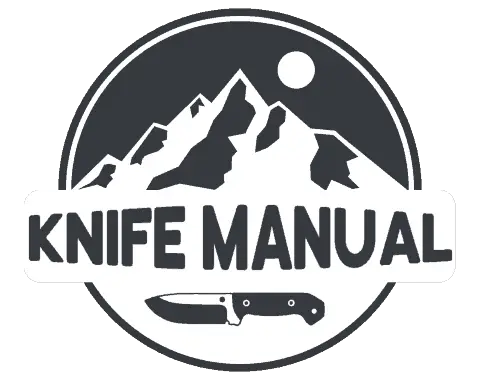Many people hear about knife scales, but never fully understand what they actually are and often get them confused with other similar knife terminology. For a long time, I was in the same boat of having heard of knife scales, but because I wasn’t actually making knives and running into the term regularly, I didn’t fully understand what knife scales were for the longest time.
Knife scales are the two pieces of material that are attached using rivets or other attachment methods to either side of the tang of the knife to form the handle. While not all knives have scales for their handle, they are commonly found on pocket knives and many fixed blade knives.
This seems like a simple enough definition of what knife scales are, right?
While this is a good definition of what knife scales are, there is a little bit more to know about them so that you can fully understand the wide variety of different knife scales out there and the different ways they are used.

Table of Contents
What Exactly are Knife Scales?
When you look at a knife, be it a folding knife or a fixed blade knife, there is the blade that is attached to a handle. Depending on the type of knife, the tang either extends into the handle like a fixed blade knife or it doesn’t go into the handle at all like with a folding knife.
In the case of a knife that has a full tang, there are often two pieces of material on either side of the tang that is attached using a rivet, pins, epoxy, glue, or some other method of attachment. These two slabs of material on either side of the tang are the knife scales.
The same thing as described above goes for folding knives as well. The two pieces of material found on either side of a folding knife where the blade folds in between them are called knife scales.
Basically, knife scales are any material in the form of two slabs that either sandwichs the tang of a knife or is on either side of a folding knife handle to allow the blade to fold in between the two slabs.
And that is the general definition of a knife scale. Not as scary and mysterious as I once thought, I guess.
What Type of Knives have Scales?
Almost any type of knife and almost any knife design can have scales. And indeed, almost any type of knife out there has versions being sold that have scale handles.
Whether its a folding knife or a fixed blade knife, it can be a scale handled knife. It’s not so much about whether a certain type or design of knife can have scales, it is mostly about whether it makes sense or not and whether or not the handle material will work well as scales.
It really comes down to whether the intended use of the knife will permit having a scaled handle, or are the various other knife handle material forms better for that particular knife.
Almost every type of knife can have a scaled handle, it’s all about whether it makes sense or not.
Materials that Knife Scales are Usually Made of

The number of possible knife scale materials is a little bit limited. That’s not to say that it doesn’t still have hundreds of different possible material options, its just that it’s limited when compared to the almost endless number of possible handle materials in existence.
Basically, any material that can hold its form and stay structurally secure when sliced into thin slabs and attached to a knife tang can work as a knife scale. However, there are a fair amount of materials that would crack or break if they were sliced into such thin slabs, and those are the materials that don’t make good knife scales.
Wood
One of the most common materials used as knife scales, wood is durable, resistant, easy to work with, and makes a great knife handle for almost any activity.
There are also so many different types and kinds of wood that the possibilities are almost endless. There are, however, a few types of wood that just don’t do well as knife scales, so be aware of that if you are making knives or buying knives with wooden scales.
Bone
Bone is one of the harder materials on this list to actually make work as a knife scale, but it is very possible to do. Bone is naturally very prone to cracks and flaking that cutting it into thin scales is a nightmare for someone that isn’t experienced.
Besides the difficulty of actually making the scales out of bone, bone makes a wonderful material for a knife handle. It is very durable and will last for a long time without falling apart if the material is of high quality and it is properly maintained.
Metal
One of the less common materials used to make knife scales, metal is just very heavy in general and can be quite slippery if you are in a moisture-filled environment and it is not textured for added stability and grip. However, there are many metals that are perfect for knife scales because they are very light while also being very strong and durable.
Overall, metal is a great knife scale option, but I tend to not see many knives offering it their primary handle material that the scales are made of. Maybe it’s just me, I don’t know.
Synthetic
By far, one of the most popular knife scale materials, over the years there has been an explosion of different plastics and synthetic materials being made that are absolutely amazing for knife scales.
While some synthetic materials are produced for other purposes and just happen to make good knife scales, there are many that are designed and made to be used as knife handles. These types of materials make some of the best knife scales out there.
Synthetic materials are a great option for knife scales because they are strong, durable, very customizable, and many are also good at not cracking or splitting when they are cut into thin knife scales.
How are Knife Scales Attached to the Knife Tang?
There are many different methods to attach knife scales to the tang of a knife. One of the most popular and common ways to do this is with rivets. But there are so many other options such as pins, glue, epoxy, and other methods and combinations.
When rivets or pins are used to attach the knife scales, two or more holes are drilled in the tang of the knife as well as the two scales and the rivets are secured in the holes. This is often done with some glue or epoxy added to the inside of the scales so they stick to the tang better.
There are so many different options and ways to attach knife scales to the tang of a knife and each has its own downsides and advantages. But that is the basics of how it is done, without getting too technical.
Why are Knife Handles Called Scales?
Knife scales are the thin slabs of material that are attached to either side of a knife tang or form the handle for a folding knife. This means that they, along with other parts of the knife such as the tang, make up the handle.
The handle of a knife is the entire part of the knife that you hold to use the blade. The knife scales are a separate part of the knife but are a part of the handle. So really, knife scales and handles are essentially the same thing.
There are many different opinions on the exact definition of a knife handle versus a knife scale. According to some, it depends on whether or not the knife is a folding knife or a fixed blade knife to determine if the part of the knife that you hold is called a scale or a handle.
It can be pretty confusing. There are many different opinions on this and there is no universally excepted book or document that has all the knife terms and their definitions. Whether you call the part of a knife that you hold a handle or a scale is largely dependant on your opinion on the matter and where you are from.

